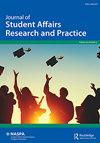微藻在纤维素降解和生物燃料利用方面的潜力
IF 0.8
Q3 EDUCATION & EDUCATIONAL RESEARCH
Journal of Student Affairs Research and Practice
Pub Date : 2023-05-31
DOI:10.47611/jsrhs.v12i2.4430
引用次数: 0
摘要
随着社会越来越依赖燃料,必须研究一种更可持续的能源形式。另一个主要问题是用于生物燃料的其他植物(如玉米)剩余的纤维素的产量。然而,微藻,莱茵衣藻,一种单细胞生物,是一种理想的能量来源,因为有证据表明它含有负责纤维素酶编码的基因,纤维素酶允许纤维素降解,如内切葡聚糖酶。莱茵衣藻通常生活在土壤和水环境中,是一种利用光作为能量来源的光合生物。微藻表达纤维素酶的不寻常特性允许微生物利用外部碳源,这可能会影响生物燃料中常见的大分子(如脂质和碳水化合物)的生物输出。这项研究的目的不仅是比较莱茵衣藻的纤维素酶表达水平,而且还研究了微藻的脂质输出与生物燃料工业中使用的其他微生物(如另一种用于直接燃料的光养微藻小球藻)的比较。此外,还将比较里氏木霉,这是另一种用于生物燃料生产的微生物。然而,该行业利用里氏木霉生产纤维素酶的能力,而不是直接从微生物中提取。不幸的是,结论没有显示任何纤维素酶的表达,生物燃料的产出有利于藻类本文章由计算机程序翻译,如有差异,请以英文原文为准。
The Potential of microalgae for cellulose degradation and utilization for biofuel application
As society is becoming more reliant on fuels, a more sustainable form of energy must be investigated. Another presiding issue is the output of cellulose left over from other plants that are used for biofuels, such as corn. However, the microalgae, Chlamydomonas Reinhardtii, a unicellular organism, is an ideal source of energy, as there is evidence that it contains the genes that are responsible for the encoding of Cellulases, which allow for the degradation of cellulose, such as endoglucanases. Chlamydomonas Reinhardtii typically lives in both soil and water environments, a photosynthetic organism that utilizes light as an energy source. The uncommon trait for microalgae to express cellulase allows for external sources of carbon to be utilized by the microorganism, which could affect the biological output of macromolecules common in biofuels such as lipids and carbohydrates. The study aims to compare not only the cellulase expression levels of Chlamydomonas Reinhardtii, but also see how the lipid output of the microalgae compares to other microorganisms used in the biofuel industry such as Chlorella Vulgaris, another phototrophic microalgae, which is used for direct fuel. Additionally, Trichoderma Reesei will also be compared, which is another microorganism that is used for biofuel production. However, the industry utilizes Trichoderma Reesei’s ability to produce cellulase, rather than just taking directly from the microorganism. The conclusions unfortunately did not show any cellulase expression, and biofuel output favored algae
求助全文
通过发布文献求助,成功后即可免费获取论文全文。
去求助
来源期刊

Journal of Student Affairs Research and Practice
EDUCATION & EDUCATIONAL RESEARCH-
CiteScore
2.40
自引率
9.10%
发文量
50
期刊介绍:
The vision of the Journal of Student Affairs Research and Practice (JSARP) is to publish the most rigorous, relevant, and well-respected research and practice making a difference in student affairs practice. JSARP especially encourages manuscripts that are unconventional in nature and that engage in methodological and epistemological extensions that transcend the boundaries of traditional research inquiries.
 求助内容:
求助内容: 应助结果提醒方式:
应助结果提醒方式:


